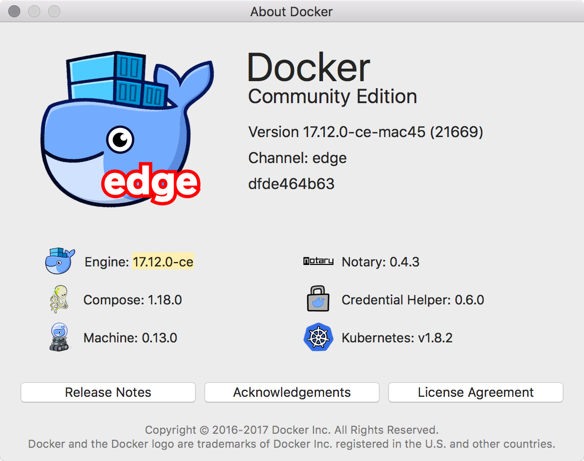

- #MAC OS DOCKER COMPOSE USE ALL CPU MAC OS#
- #MAC OS DOCKER COMPOSE USE ALL CPU MANUAL#
- #MAC OS DOCKER COMPOSE USE ALL CPU PRO#
- #MAC OS DOCKER COMPOSE USE ALL CPU SOFTWARE#
- #MAC OS DOCKER COMPOSE USE ALL CPU MAC#
Luckily I did find a solution that serves me right away and might also help with the transition to Apple Silicon in the future. Also, I like to skip 1st gen hardware and wait on the sidelines a bit longer before I migrate my production workflows to new hardware running on ARM. “Virtualization on the new Macs won’t support X86 at all” ( source)Ĭraig even explicitly called out Docker containers being built for ARM, and being able to run them on ARM instances in AWS, but what about building your X86 images? I know you can build for multi-arch including ARM now with docker desktop ( post), but what will the performance hit be for Apple Silicon?Īll in all, upcoming Apple Silicon doesn’t seem like an immediate win for my specific problem with Docker performance.
#MAC OS DOCKER COMPOSE USE ALL CPU SOFTWARE#
It is also worth noting that Craig Federighi, Apple’s senior vice president of Software Engineering, said the following during an interview after the initial WWDC Apple Silicon announcement:

In other words, I still need to build X86_64 images and this will require emulation and virtualization that some are expecting to have a 2x to 5x performance hit. And X86_64 is still my deployment target for the foreseeable future. However, this might not hold true as Apple Silicon will be an ARM SoC, which is a different architecture than X86_64.
#MAC OS DOCKER COMPOSE USE ALL CPU MAC#
So at first I thought that the answer to the lackluster Docker performance on the Mac would simply be waiting for the new ARM hardware release and buying a new Macbook Pro.
#MAC OS DOCKER COMPOSE USE ALL CPU PRO#
With myself being an Apple enthusiast, you can image why I’m excited about the upcoming transition from Intel CPUs to Apple Silicon, which is planned to make its debut in their Macbook Pro and iMac lineup later this year ( Rumors point to a November event). This point probably warrants a whole dedicated blog post, but if you are like me, and also run a lot of docker build commands locally, then you will be interested in the solution I found to my main problem: the lack of macOS docker performance (long build times) and noisy CPU fans.
#MAC OS DOCKER COMPOSE USE ALL CPU MANUAL#
While you could argue that you should not build and push Docker images to staging or production from your local development machine and just incorporate it in your CI/CD pipeline, I prefer having this manual control, which is also nicely supported by the bedrock.io build and deploy commands. Of course a relative performance hit (compared to running on Linux directly) is something I could live with, but my main annoyance presents itself loudly when I’m building (and deploying) a lot of Docker images: it spins up my Macbook pro CPU fans to audible levels, something in stark contrast to the absolute silence at which my laptop runs almost everything else (I guess I’m spoiled). In other words, there is a lot of extra (hyper)virtualization and filesystem overhead going on.
#MAC OS DOCKER COMPOSE USE ALL CPU MAC OS#
In addition to this, there is an abstraction layer between Mac OS kernel and applications (Docker containers) and the filesystems are not the same. Therefore, there is a client on Mac OS to run Docker. Unfortunately, Mac OS and Windows cannot provide this. The reason for being slow and performance hungry is succinctly explained in this Stackoverflow answer:ĭocker needs a plain Linux kernel to run. One thing, however, that could use improvements is Docker Desktop ( for mac), to increase Docker container performance, speed up docker build times and reduce CPU usage when running “idle”. It is providing these new CLI tools and templates on a stable OS with little to no issues, a nice UI with great HIDPI scaling (rocking a LG 5K monitor over here), and of course I’ve become so used to the interface that switching back to Windows or Linux Desktop would mess up my optimized workflows and habits. While my development stack changed over the years and nowadays includes Docker, Kubernetes and bedrock.io, macOS still continues to serve me well. MacOS is a UNIX operating system running on X86 hardware (changing to ARM soon, but more on that later) that makes developing for Linux production servers a smooth experience utilizing the same UNIX tooling.


 0 kommentar(er)
0 kommentar(er)
